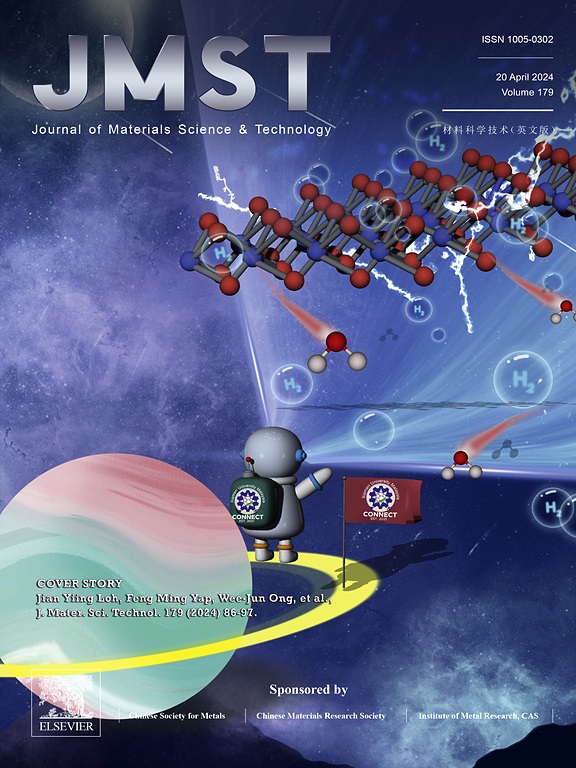Preferentially-orientated gradient precipitates enable unique strength-ductility synergy in Mg-Sn binary alloys
IF 14.3
1区 材料科学
Q1 MATERIALS SCIENCE, MULTIDISCIPLINARY
引用次数: 0
Abstract
Conventional manufacturing approaches, including casting, thermal deformation and annealing, have faced great challenges in achieving both exceptional strength and ductility for Mg alloys. Herein, we report an effective strategy for simultaneously enhancing the tensile yield strength (YS = 341 ± 9.6 MPa) and elongation (EL = 15% ± 1%) of a Mg-4Sn (at.%) binary alloy at room temperature, which has been prepared by an ultrahigh-pressure treatment followed by Joule-heat treatment (UPJT). More attractively, the aging condition (80 μs, 500 Hz, 600 s) is the most time-efficient mode for aged Mg alloys. The reason is mainly associated with the presence of a unique preferentially-orientated gradient precipitate structure, as confirmed by transmission electron microscopy observations, density functional theory calculations and molecular dynamics simulations. Both experimental and theoretical results demonstrate that twin boundary-induced precipitation followed by precipitate-assisted twin boundary migration accounts for the formation of gradient precipitate structures. The fine Mg2Sn particles can effectively pin dislocation movement to enhance its strength. Comparatively, the coarse Mg2Sn particles can undergo plastic deformation and shear deformation, contributing to its high ductility. The strategy of preferentially orientated gradient structure provides a budding perspective for designing new Mg alloys with superior mechanical properties.

优先取向的梯度相使Mg-Sn二元合金具有独特的强度-延性协同作用
传统的制造方法(包括铸造、热变形和退火)在实现镁合金的超强强度和延展性方面面临巨大挑战。在此,我们报告了一种同时提高室温下 Mg-4Sn(at.%)二元合金拉伸屈服强度(YS = 341 ± 9.6 MPa)和伸长率(EL = 15% ± 1%)的有效策略,该合金是通过超高压处理后焦耳热处理(UPJT)制备的。更吸引人的是,时效条件(80 μs,500 Hz,600 s)是时效镁合金最省时省力的模式。其原因主要与独特的优先取向梯度沉淀结构的存在有关,透射电子显微镜观察、密度泛函理论计算和分子动力学模拟都证实了这一点。实验和理论结果都证明,孪晶边界诱导沉淀和沉淀辅助孪晶边界迁移是梯度沉淀结构形成的原因。细小的 Mg2Sn 颗粒能有效地抑制位错运动,从而增强其强度。相对而言,粗的 Mg2Sn 颗粒可以发生塑性变形和剪切变形,因而具有较高的延展性。优先取向梯度结构的策略为设计具有优异机械性能的新型镁合金提供了新的视角。
本文章由计算机程序翻译,如有差异,请以英文原文为准。
求助全文
约1分钟内获得全文
求助全文
来源期刊

Journal of Materials Science & Technology
工程技术-材料科学:综合
CiteScore
20.00
自引率
11.00%
发文量
995
审稿时长
13 days
期刊介绍:
Journal of Materials Science & Technology strives to promote global collaboration in the field of materials science and technology. It primarily publishes original research papers, invited review articles, letters, research notes, and summaries of scientific achievements. The journal covers a wide range of materials science and technology topics, including metallic materials, inorganic nonmetallic materials, and composite materials.
 求助内容:
求助内容: 应助结果提醒方式:
应助结果提醒方式:


